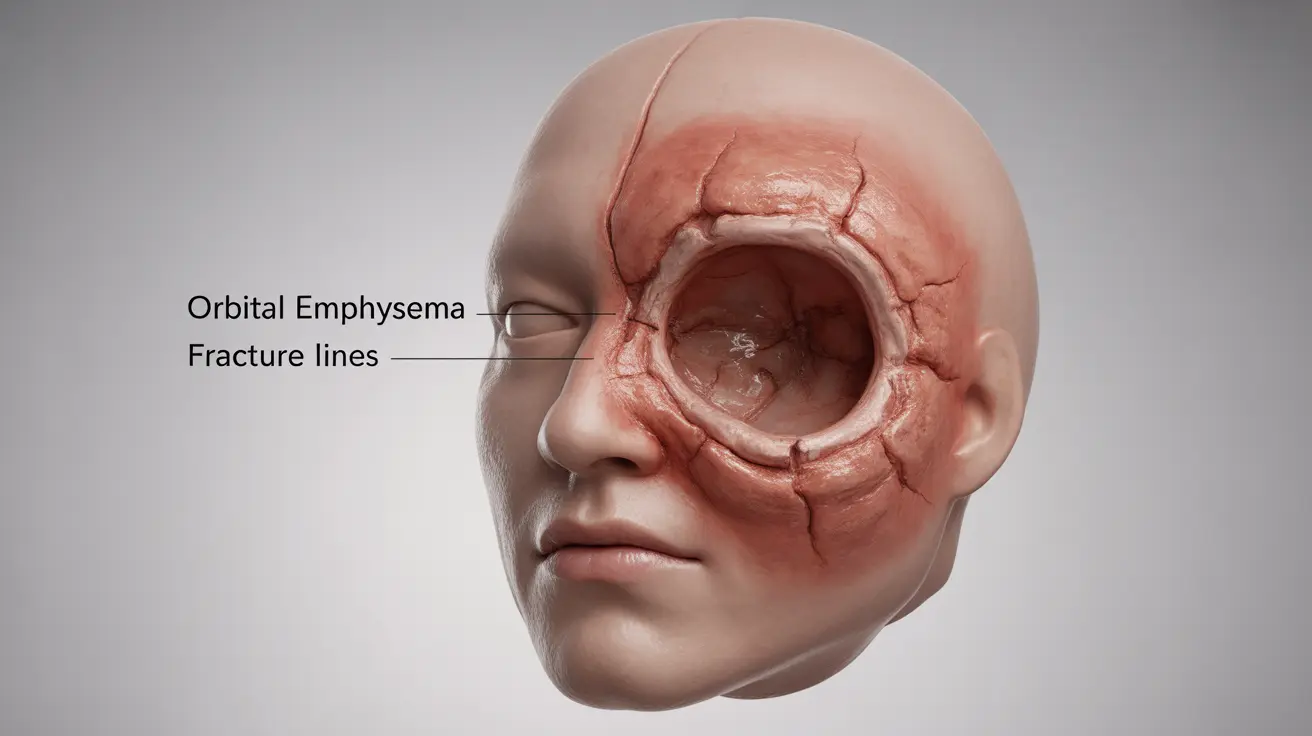When air becomes trapped in the tissues around the eye socket, a condition known as orbital emphysema develops. This medical condition requires prompt attention and understanding to prevent potential complications. While it may sound alarming, proper diagnosis and treatment can effectively manage this condition in most cases.
Understanding orbital emphysema is crucial for anyone who has experienced facial trauma or is recovering from sinus surgery. This comprehensive guide will explore the causes, symptoms, and treatment options for air trapped in the eye socket.
Understanding Orbital Emphysema
Orbital emphysema occurs when air enters the soft tissues surrounding the eye. This condition typically develops following trauma to the face or after certain surgical procedures. The air can become trapped when there's a break in the bones separating the eye socket from the sinuses.
Common Causes and Risk Factors
Several situations can lead to air becoming trapped in the eye socket:
- Facial trauma or injury
- Nose blowing after facial fractures
- Recent sinus or orbital surgery
- Barotrauma (pressure-related injury)
- Infection spreading from the sinuses
Signs and Symptoms
Recognizing the symptoms of orbital emphysema is essential for early intervention:
- Sudden swelling around the eye
- Crackling sensation when touching the affected area
- Vision changes or double vision
- Eye pain or pressure
- Difficulty moving the eye
- Protrusion of the eye
Diagnosis and Medical Assessment
Healthcare providers typically use several methods to diagnose orbital emphysema:
- Physical examination
- CT scans of the orbital area
- X-rays to identify facial fractures
- Vision tests to assess eye function
Treatment Approaches
The treatment for orbital emphysema varies depending on its severity:
Conservative Management
For mild cases, treatment may include:
- Avoiding nose blowing
- Head elevation
- Cold compresses
- Regular monitoring of vision and eye pressure
Medical Intervention
More severe cases might require:
- Needle decompression
- Surgical repair of orbital fractures
- Antibiotics if infection is present
- Emergency care for vision-threatening cases
Prevention and Recovery
Taking certain precautions can help prevent complications:
- Following post-surgical instructions carefully
- Wearing protective eyewear during high-risk activities
- Avoiding actions that increase pressure in the sinuses
- Seeking immediate medical attention after facial trauma
Frequently Asked Questions
What are the symptoms and signs that I might have air trapped in my eye socket?
Key signs include sudden swelling around the eye, a crackling sensation when touched, vision changes, eye pain or pressure, and possible protrusion of the eye. If you experience these symptoms, especially after facial trauma or surgery, seek medical attention immediately.
How is orbital emphysema typically treated, and when is medical intervention necessary?
Mild cases are often treated conservatively with observation, avoiding nose blowing, and head elevation. Medical intervention becomes necessary when there are vision changes, severe pressure, or signs of infection. Treatment may include needle decompression or surgery in severe cases.
Can orbital emphysema be caused by something other than trauma or surgery?
Yes, orbital emphysema can also be caused by barotrauma (pressure changes), severe sinus infections, and forceful nose blowing, especially if there are pre-existing weaknesses in the orbital walls or previous facial fractures.
What are the main differences between the types of orbital emphysema, such as palpebral and true orbital emphysema?
Palpebral emphysema affects mainly the eyelids, causing superficial swelling, while true orbital emphysema involves air trapped deeper within the eye socket. True orbital emphysema typically poses a greater risk of complications and may require more aggressive treatment.
How can I prevent or reduce the risk of complications from orbital emphysema?
To prevent complications, avoid nose blowing if you've experienced facial trauma, follow post-surgical instructions carefully, wear protective eyewear during risky activities, and seek immediate medical attention if you notice any symptoms. Regular monitoring and early intervention are crucial for preventing serious complications.




